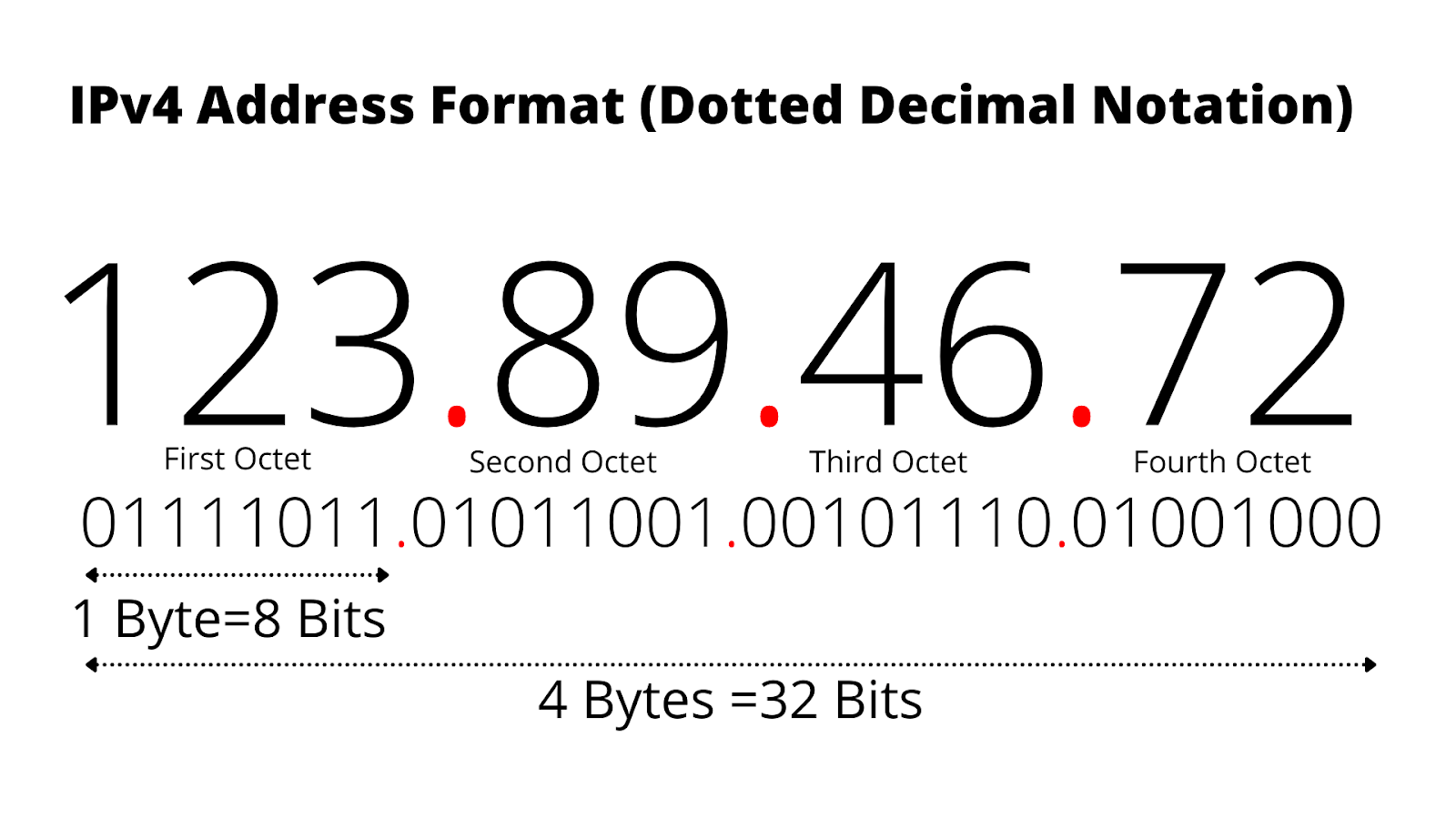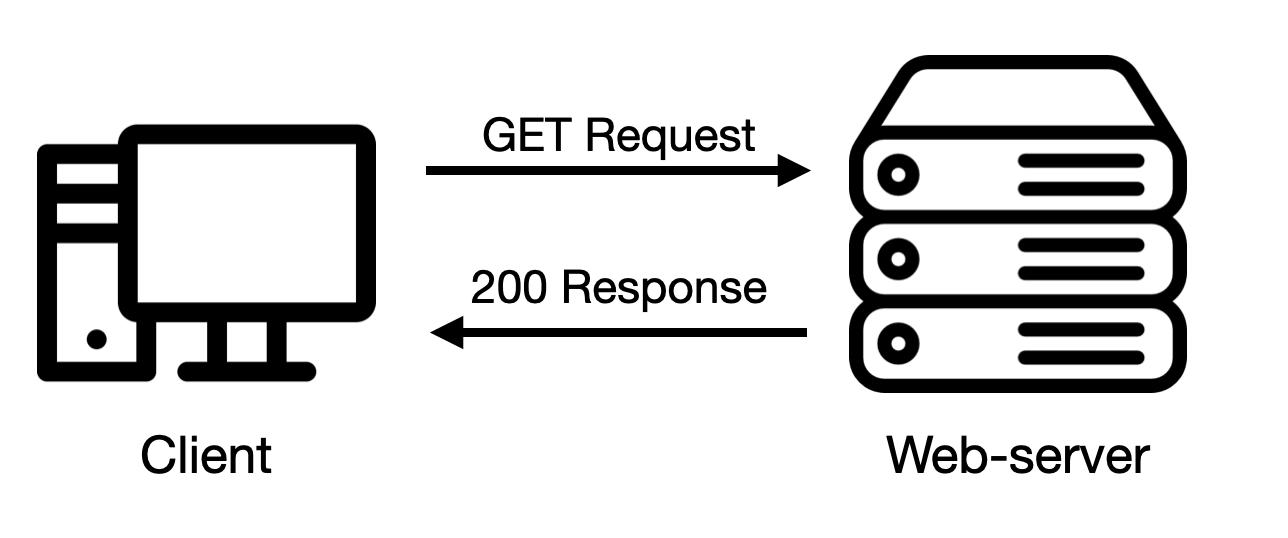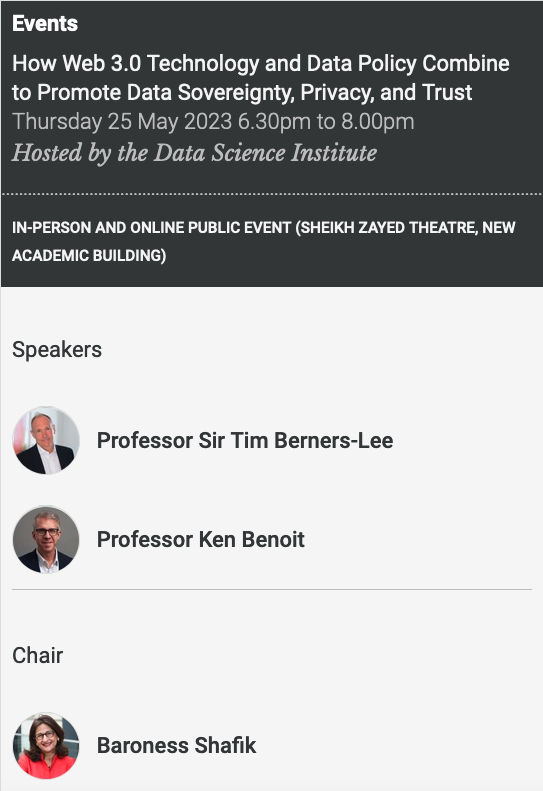🗓️ Week 01 – Day 03
The Internet and the Web
12 Jul 2023
The Internet and how it works
We are surrounded by hosts
- Hosts are devices that can send or receive traffic
- Host can be anything:
- laptops
- smartphones
- PCs
- supercomputers
- etc.




Client-Server model
- Host interacts and exchanges “messages”.
- Those hosts that send requests are called clients
- Those that respond to them with content (webpages, data, emails, etc.) are called servers
Such a request-respond system is called a client-server model

IP addresses
- Each host needs a unique name to communicate with others
- In networking this name is called an IP address
- An IP address weighs 32 bits and hence conveys 32 1-s and 0-s
- We split those into 4 chunks and get an address of the following format:

The hierarchy
- IP addresses are assigned hierarchically
- Each new part of the IP address represents a certain part of the network
Networks
- Hosts are interconnected through a complex set of cables, routers, switches, etc.
- Each of these networks has its own rules of connectivity
- Examples of smaller/local networks:
- your house (laptop + printer + smartphone)
- LSE (many PCs + laptops + supercomputer)
- an office (laptops + printers + projectors)
- If you unite all of the networks
+ add rules of their connectivity
called protocols you will get the Internet
Protocols
Why do we need protocols?
- Before around 1973 computers didn’t have a unified system of rules to interact
- In 1973 the development of the so-called TCP/IP (Transmission Control Protocol + Internet Protocol) has started
“that allowed any system to connect to any other system, using any network topology” (Hall 2000)
TCP/IP
- TCP/IP implies a family of different protocols
- Each of these protocols serves a certain purpose
The most widely used protocols include:
- Address Resolution Protocol (ARP)
- Domain Name System (DNS)
- File Transfer Protocol (FTP)
- Internet Message Access Protocol (IMAP)
- HyperText Transfer Protocol (HTTP)
HTTP example

- A user sends a request to the server and gets back a webpage.
- Usually, HTTP protocol is in the form of HTTPS, where S stands for secure.
For example: https://lse.ac.uk
World Wide Web (WWW)
- When you send an HTTP request to a web server you get back a web page
- A web page is a document that can be displayed in a web browser
- We refer to the “World Wide Web” as a collection of web pages that are connected through hyperlinks
- The World Wide Web is a central part of the Internet, but it’s not the same thing
What’s the future of the Web?
Tools for creating web-pages
There are 3 key web standards:
- HTML (HyperText Markup Language) - used to create the “skeleton” of the page
- CSS (Cascading Style Sheets) - used for advanced styling
- Java Script - used for interactivity
During the course, you will mostly be working with HTML but will eventually have to interact with CSS, less so with Java Script.
Live Demos
- How to create HTML pages
- How to style them
- Let’s browse W3Schools together
- it’s a great resource for learning HTML, CSS, and JavaScript
After the ☕ break:
- Markdown
- R Markdown
- Group Exercises (HTML and XML parsing)
References
Hall, Eric A. 2000. Internet Core Protocols: The Definitive Guide. Beijing ; Cambridge, Mass: O’Reilly.
![]()
LSE ME204 2023 (W01D03) | ARCHIVE
